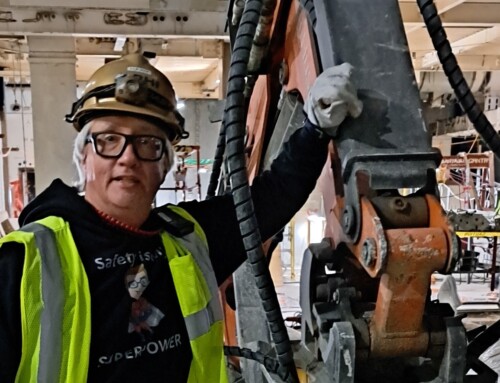 Author Irving Stone dedicated a lifetime to studying the lives of great people. He is renowned for having written novelized biographies of men such as Sigmund Freud, Vincent van Gogh, and Michelangelo. Stone once was asked if any similarities or common characteristics were predominant in the lives of these successful people. His response, “The people I write about sometime in their life, had a vision or dream of something they believed should be accomplished, and they committed themselves to it.”
Author Irving Stone dedicated a lifetime to studying the lives of great people. He is renowned for having written novelized biographies of men such as Sigmund Freud, Vincent van Gogh, and Michelangelo. Stone once was asked if any similarities or common characteristics were predominant in the lives of these successful people. His response, “The people I write about sometime in their life, had a vision or dream of something they believed should be accomplished, and they committed themselves to it.”
When asked how he accounted for his amazing inventive genius, Thomas Alva Edison replied, “It is because I never think in words; I think in pictures.” Edison was a master at picturing in his mind the objects he desired to invent.
The people mentioned above accomplished phenomenal achievements because they visualized what they wanted. They understood where they were going and what the end result would look like. Even when misfortune struck, they kept pursuing their goals—because they could visualize success.
On the other hand, most people have few, if any, visual goals. They wake up every day and walk, talk, eat, think, and work without clear-cut direction. Just “getting by” becomes the summit of their achievement. Helen Keller put it bluntly, “The most pathetic person in the world is someone who has sight but has no vision.” Without an image to strive for, there is no motivation, and without motivation, there is no progress. If a person, department, or company doesn’t know which way is forward, achievements are not supported and reverses are ignored.
Where is your safety and health program going? Could you paint a lucid picture of what you want it to look like next year? Forget about the numbers. Visualizing a lower injury rate will not build enthusiasm or encourage change. If someone asked you to describe what’s needed to transform your department into the best of its kind, what would you say? The answers lie in your imagination. That’s where goals are created and nourished. According to Paul Meyer of Success Motivation Institute, “What you ardently desire, sincerely believe in, vividly imagine, enthusiastically act on, must inevitably come to pass.”
Vividly imagining goals may feel strange at first, even silly. However, consider this: Thomas Edison, Leonardo da Vinci, Helen Keller, and Albert Einstein all practiced imagining. They would construct “impossible” goals with their minds and then work hard to reach them. Striking results followed. Even when a certain goal couldn’t be reached, there was progress. Energy wasn’t wasted trying to find out where they were going, because these men and women knew what the prize looked like and which paths led to it.
You can do the same simply by imagining what your safety and health program would look like if it were flawless. Try it. Answer these questions as if your company has already developed an impeccable safety and health culture:
- How do employees feel about their personal protective equipment? What do they like most about it?
- What do employees do when they notice a safety or health hazard?
- How long are pre-job briefings and what do they consist of?
- What do completed incident reports look like?
- How do employees feel physically and mentally when they arrive at work each morning?
- How are new employees treated?
- Which “bad” habits do new employees eliminate after one week on the job?
- How do employees feel when they must work harder or work on a job that requires extra PPE?
- What happens when a new procedure is written or a new process is introduced?
- What problems do not exist? Why?
Once you’ve assembled the program of your dreams, compare it to the one you have now. Then, set goals based on the differences. Next, you’ll want to list some of the actions needed to change reality so that it moves closer to your imagination.





